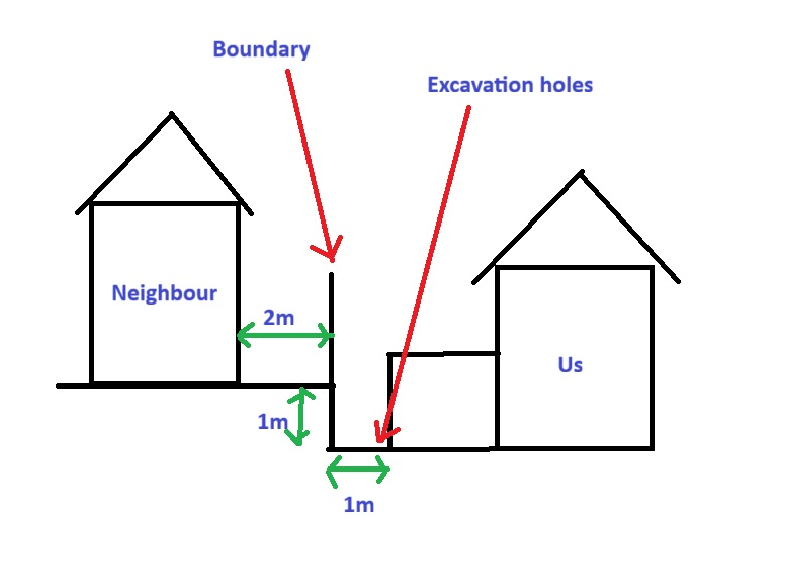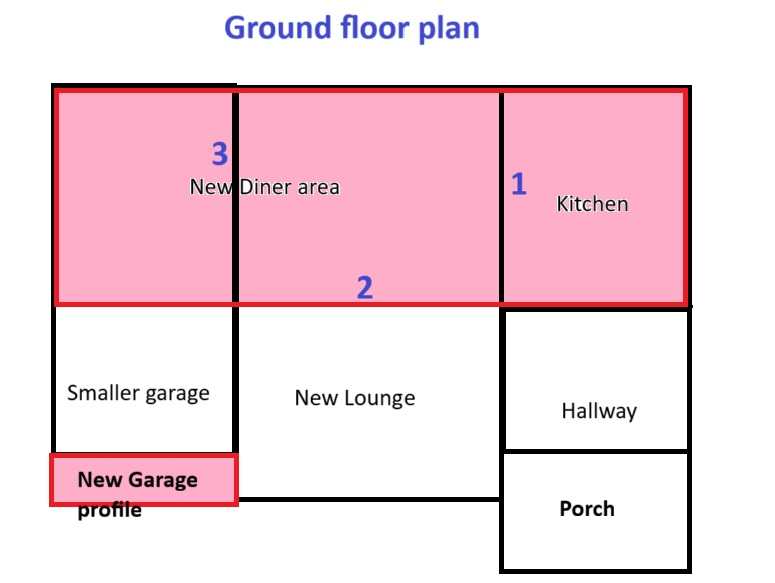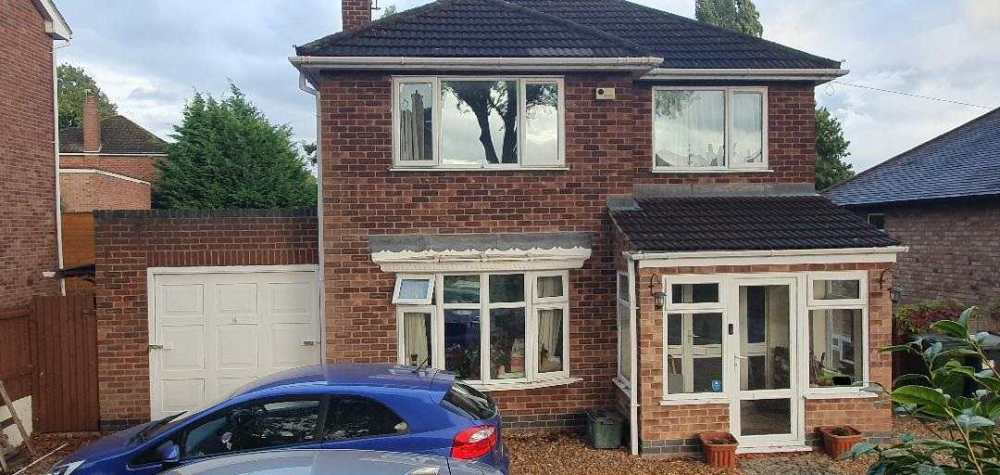
SilverShadow
Members-
Posts
159 -
Joined
-
Last visited
Recent Profile Visitors
The recent visitors block is disabled and is not being shown to other users.
SilverShadow's Achievements

Regular Member (4/5)
5
Reputation
-
The basic architect questions thread
SilverShadow replied to SilverShadow's topic in Surveyors & Architects
For anyone still keeping tabs on this thread (and i wouldn't blame anyone for not doing so! 😆) Has anyone had experience of using some of these big name architect companies, like: Arkiplan Homz Planning by design They seem to be more of an online service, but appear to have a wealth of services to offer & can provide a comprehensive 'all in 1' package for several £k cheaper than others we've had quotes from. We definitely won't skimp unnecessarily at this step of the process, but likewise would be happy to try these companies if folks have had positive experiences with them For the record: we are still hoping to use a local architect if possible, but been let down recently & so exploring all options to try and push ahead Cheers, all Shadow -
On another front, one of the architects replied to me, stating his party wall surveyor friend says that it's 'an unwritten rule' that exploratory pits generally don't require a PWA in place I've no reason to doubt him, but couldn't find anything around this. I definitely won't be rushing into anything, as its likely he's not privy to their potential location They would be within 1m of the boundary & approx 3.3m of the adjacent house
-
Many thanks guys- very valuable stuff indeed 😁 Agree with the comments above & have reached out to the neighbour (landlord) about the desire to renovate, who was happy to send via email Within the email I contained a couple of rough 'before' & 'after sketches', together with bullet points of the work & rough guesstimate start date. I stressed that this is at the very early 'vision' stage, so likely details would change as things progress. I made sure to explicitly state we want them on board at an early stage, to gather feedback & concerns. I also mentioned we would likely need to dig exploratory pit(s) and mentioned PWA, together with a link to a website around Party Wall info. The opportunity for them to formally review plans via communication from the council was also something I stated We've since discovered their father is an Architect, so I imagine they will appreciate the heads up & work required in the proposal. With luck, it may work to our favour, in terms of understanding process & the need for some of the tasks to be done
-
Brilliant stuff - many thanks! We are planning on contacting the neighbour next week, and sending an email detailing our proposal and rough start date. If email is acceptable then this will be an amazing cost saving to our project. The neighbour has tenants in the house, which i believe also need to give consent? Either way, if we can get this sorted next week, then we could start exploratory holes early/min Jan (as i think we need 2 months notice before commencing).
-
Great advice! Tbh, we were pretty much sold on contacting them regardless - so i think we'd rather stay on good terms and keep everything above-board. I should have mentioned to take those measurements with a pinch of salt - it's definitely 3m at least, but that's an irrelevancy if we're informing them anyway For their agreement, would you say something via email would suffice? And just to remove all doubt - if they agree via email we'd probably not need an official Party Wall Agreement doc?
-
Yeah, i suspect you may be right. There is a rule about drawing a 45' line from the base of the neighbours foundation (where 3-6m from neighbours house), and if your digging/foundations do not cross this line then you don't need it. However, the crux of this is knowing how deep their foundations go, and i think some just take the 45' line from the ground surface to be on the safe side. I'm not 100% sure on that last bit though
-
Hey all, Thought i'd quickly ask you guys for your thoughts on the following please.... When digging 2 foundation exploratory holes (to check existing foundation depth) near our boundary, is a formal party wall agreement need to be in place, prior to excavation? The holes will be 50cm x 50cm, to check the depth of our garage foundations (so possibly be 1m deep or more). These would be within 1m of the neightbours boundary wall, and their land is 1m higher than ours. We want to keep on good terms with the landlord/tenants next door, so would notify them anyway. I just wanted to check whether we'd definitely need a party wall agreement in place prior to digging the exploratory holes, and whether it should be a formal document prior to commencing? (i suspect we will need this, but wanted to check my understanding is correct)
-
Planning permission perils & pitfalls
SilverShadow replied to SilverShadow's topic in Planning Permission
Either way, feels more like a game of chess: trying to outfox the other, which is simply insane.... -
Planning permission perils & pitfalls
SilverShadow replied to SilverShadow's topic in Planning Permission
Thanks guys - mighty helpful!! I think my local council prefer the extension to be set back (subservient), but other local builders i've spoken to say 'no probs' with bringing it level. Indeed, there is a mix of both where i live, so perhaps they have changed their stance over time? Personally, i feel bringing it forward would allow the roofline to flow better (and potentially make the rafter design a little easier....) I think a ring to the planning dept might be the best course of action - hopefully they give something more definitive than 'read the planning guidelines', because i always find that has more room for misinterpretation. One architect i spoke to with came up with a novel plan: extend the porch lower-roofline across the whole of the front profile and over the garage. That way you can probably bring the garage forward without much objection. Perhaps he knows something others don't..... 🤔 -
Hey all, Big thanks to all you helpful bods that have advised me in the past, and hopefully it continues into this thread Let me firstly say that we're only at the very early preliminary stage, and only just contacting professionals/trades people at this point..... What we propose is a 2 storey house side-extension (above the garage and into the back of the garage). Purely for aesthetics, i'd like the front of the garage & extension above to be flush with the bay window wall (and tooth-in). The extension would be in-keeping with existing materials, build with similar look/materials & pitched roof) However, i've heard there may be some hurdles from PP with this...? 1) Does anyone know of rules around where side-extension street facing profiles & where they have to be? I've seen some side-extensions in my road that are flush and other recessed back, so it seems like it WAS possible at some point (maybe isn't anymore?) 2) Likewise, has anyone come across problems with pitched roof height rules? (i can imagine there being several standard solutions to allow a pitched roof to extend) 3) If anyone has encountered these problems - what was your experience, and any tips or advice you can share? 4) Perhaps this is also a scurrilous rumour (i intend to ring our local council PP dept anyway), but allegedly failed PP's may require another application fee for each re-submission? Sounds improbable, but not impossible! Thanks guys - i'm, purely on a fact-finding mission with this, to arm myself with info before considering next steps In your debt Shadow
-
The basic architect questions thread
SilverShadow replied to SilverShadow's topic in Surveyors & Architects
Thanks again for the wide array of responses guys - it's obviously a hugely evocative subject 😅 Apologies again, if this has stirred up ill feelings A few more questions, if you guys would indulge further..... Our architect has stated that revisions are included in the quote (a full redraw would naturally cost extra though). For revisions: 1. Presumably, these can occur even after planning phase (ie: during construction phase), if the design changes for whatever reason? 2. Can anyone specify what is classed as a revision, or redraw - or is this best to clarify with the architect? (i'd assume revisions would be something reasonably minor, eg: not knocking down a partition wall/adding a downstairs 'under the stairs' loo, and redraw would be to start from scratch). It's that fine line where a change is so big it's no longer class as a revision, that's the most intriguing thing 3. If we decide not to do all the proposed work/ require slight changes, then do we need architects drawings updating to reflect this for BC to sign off/approve the build? (I guess it depends on what the deviation from plan is) Regardng bullet point 3: our plan is for the architect to design all our requirements, then likely scale back once costs are known. We were wondering if scaling back needs extra drawing revisions in order for BC to be happy...... Huge thanks as always chaps! Shadow -
The basic architect questions thread
SilverShadow replied to SilverShadow's topic in Surveyors & Architects
Another few dumb Q's please guys 🙃 1. We're assuming we want to specify our build budget up front to the architect, so he can design/spec accordingly. Would this seem like a sage approach? (I've heard some folks say keep quiet & see what the end result is, but that seems daft imo) 2. Is it typical an Architect's role is complete once design & structural drawings are done and everything signed off for construction to commence? If so then I guess we pay them 'per visit or hour' if we need theor help with builder/Bc disputes? 3. Would the architect reach out to builders to quote for the work? We assumed we'd do that, but it may be something they're happy to provide Sounds like we need a project Mgr for this. It's a modest extension of 3 new rooms, possibly to take 3-4 months (according to 1 builder) & just a reasonably basic build but to a good standard. We don't have loads of time/experience in this area, so hence the numerous q's to arm ourselves with as much info as possible 😉 -
The basic architect questions thread
SilverShadow replied to SilverShadow's topic in Surveyors & Architects
I've certainly tried to avoid any disrespect. Merely here to learn & appreciate others insights The rough costs we understand. But the overall process/roles & responsibilities from design to completion are what I'm hoping to find out more I suspect it'll be in the subsequent posts to this one




